Summary of the gaming performance: Rasterization
Depending on the selection and composition of the games, the Radeon RX 6900 XT and the GeForce RTX 3090 FE are more or less close together. In WQHD, the NVIDIA card has only a few percent advantage in this case, but it could have been bigger or smaller. But it’s still always less than 5 – 7 percent if you subtract AMD games. And then there’s SAM. Especially lower resolutions and if you’re more likely to drift into CPU bottlenecks, this smart memory access can almost work wonders.
It can hit like a bomb in one game, but in other games it can do almost nothing if it is not needed at all. If you activate SAM and normalize the results, the Radeon RX 6900 XT gains quite a bit and the average increase through SAM is around 5 percent. Again, the limitation is that it always depends on the choice of games whether and how AMD can take advantage of SAM, as it varies between no and up to 12 percent growth, depending on the application.
The evaluation with the GeForce RTX 3090 FE shows that its lead is not even three percent, so almost nothing. It’s good that AMD has resisted the temptation to compensate for that by using crowbars and a higher power consumption. Over 50 watts less is a much more impressive announcement than the forced power crown.
If you go to Ultra-HD, you’ll see amazing things, because the Radeon RX 6900 XT falls behind a GeForce RTX 3090 FE more clearly, even with SAM. This can also be observed well in single games and the question arises whether the Radeon breaks down more in UHD or the GeForce was rather handicapped in QHD.
In percent, the GeForce RTX 3090 FE is even further ahead of the RX 6900 XT than in WQHD, because it is now over 8 percent. This is not yet a drama, but it is tangible.
We are left with the realization that there is only a small disadvantage for the Radeon card between the Radeon RX 6900XT and the GeForce RTX 3090 FE in terms of performance, but this would certainly have turned out a bit bigger without SAM. Since this feature costs virtually nothing (except to implement it), NVIDIA and Intel have already announced that they want to use the Resizeable BARs in the future as well. Once again, it is regrettable that SAM can only run on the current Zen3 CPUs in conjunction with the B550 or X570 motherboards and some current Intel CPUs with Z490 motherboards, although it would certainly have been technically possible to solve it differently and, above all, across generations. This is a pity, but I wouldn’t be surprised if there will be more upgrades here.
In the end, the RX 6900 XT is not the fastest in the battle for the performance crown, but it is the most sensible and efficient interpretation when it comes to power consumption.
Gaming Performance Summary: DXR
Now let’s get down to raytracing. In order to achieve frame rates of 60 FPS and better on the Radeons, you usually have to limit the resolution or the quality of the effects a bit. In order to be able to make a visual judgement, however, you should never set the effects too low. That’s exactly why I only tested in 1080p. Here one misses generally and very painfully things like DLSS 2.0. which could have accelerated the ray show. AMD feels the same with the RX 6000 cards as NVIDIA did 2 years ago with Turing: more beautiful dying in the game, but in slow motion.
Yes, it’s definitely possible with DXR and if you reduce the settings just far enough, then also in the playable area, especially with the Radeon RX 6900 XT. But it’s still not really convincing when even a GeForce RTX 3070 without DLSS of the RX 6900XT is breathing down your neck. I deliberately tested an old game, a slightly newer one and a completely new game – it was always the same problem. Without DLSS, raytracing even NVIDIA is currently not entirely happy with ray tracing when playing in WQHD or even Ultra-HD. With the Radeon cards, these resolutions usually only go at a snail’s pace.
Once again, everything in percent with the GeForce RTX 3090 as the 100 percent mark. SAM can’t help so much with the RX 6900 XT and with SAM it’s about 1.7 percent more than without. But one lies even in 1080p with the RX 6900XT almost 26 percent behind the RTX 3090 FE. AMD will have to take another look at this, because it is far from being really performant.
I don’t know if it was just an illusion of the senses, but subjectively, especially in Metro Exodus (campaign) in closed, dark rooms with lots of small light sources, I felt that something was missing from the DXR result of the Radeon solution, or that the effects were a little simpler. Also some reflections and shadows were not completely identical, although the function of raytracing as such would have implied this. Control looked a bit better and especially in Watch Dogs Legion the look has improved slightly. If there is anything at all, and if so, what exactly is missing, would have to be tested again in detail, because unfortunately, as almost always, there was no time left for that.
Performance in the productive area
For those who miss the right tests here, I have to add a little disillusionment, despite all the euphoria about the gaming performance. I was glad that with the third BIOS of the motherboard the gaming tests were stable and error-free even with SAM and UEFI-only. I already had an extra article on this. However, I don’t want to break the staff here about the new cards and some problems with the substructure, which often enough suffer from the not yet perfect drivers.
When there is some air again, I will of course also test AMD’s ProRender in Blender and maybe do a quality comparison of the output results with CUDA, OptiX and the CPU. But the dear time…
Summary and conclusion
Apart from the performance evaluation that has already taken place, there is again a very positive impression of the technical implementation of the new Radeon cards in the reference design. A very well assembled and designed board meets here a very efficient chip, which proves once more the superiority of the production at TSMC and knows how to assert itself. The load peaks in power consumption are a much smaller problem with the Radeons and should not present even simpler power supplies with unsolvable problems. In addition, there is the sympathetic LC filter in the input section, which cannot be praised enough.
The cooling performance and the associated noise development are very good. The Radeon RX 6900 XT with a RRP of 999 Euro is certainly an interesting offer, but has yet to prove that it is not a pure halo product for Lisa’s gallery, as its efficiency has increased once again in comparison to the already good RX 6800 XT, which in return also points to a very strict selection of chips. Whether something like this will then be suitable for the masses remains to be seen.
However, it’s currently a good and above all more economical alternative to the GeForce RTX 3090 for pure gamers, which can never overtake it in total, but which can really annoy with SAM in the near field. But this only works well until DXR comes into play. This is also still usable with the Radeon RX 6900 XT, but you have to accept significant cuts due to the lack of a DLSS alternative and the lower RT performance. Those who are not affected by all this, because they see their priorities in pure rasterization, can access it without hesitation, if availability allows it at all.
Because of all the imponderables, even with the feature set, I don’t give any explicit purchase tip for the RX 6900 XT, but I do give the performance booster, because this card is really fast and at the same time cheaper and significantly more efficient than the competitor’s product. The bottom line is that AMD has finally caught up again, so technically AMD has delivered really plump except for DXR. Now the delivery must also work in the trade and it also remains the only true unknown.
- 1 - Introduction, Data and Test Setup
- 2 - Teardown: PCB, Power Scheme and Cooler
- 3 - Borderlands 3
- 4 - Control (+DXR)
- 5 - Far Cry New Dawn
- 6 - Ghost Recon Breakpoint
- 7 - Horizon Zero Dawn
- 8 - Metro Exodus (+DXR)
- 9 - Shadow of the Tomb Raider
- 10 - Watch Dog Legion (+DXR)
- 11 - Wolfenstein Youngblood
- 12 - World War Z
- 13 - Power Consumption and Efficiency in Gaming
- 14 - Power Consumption in Detail, Voltages and Standards
- 15 - Transients and PSU Recommendation
- 16 - Clock Rate and Temperatures
- 17 - Fan Curve and Noise
- 18 - Summary and Conclusion














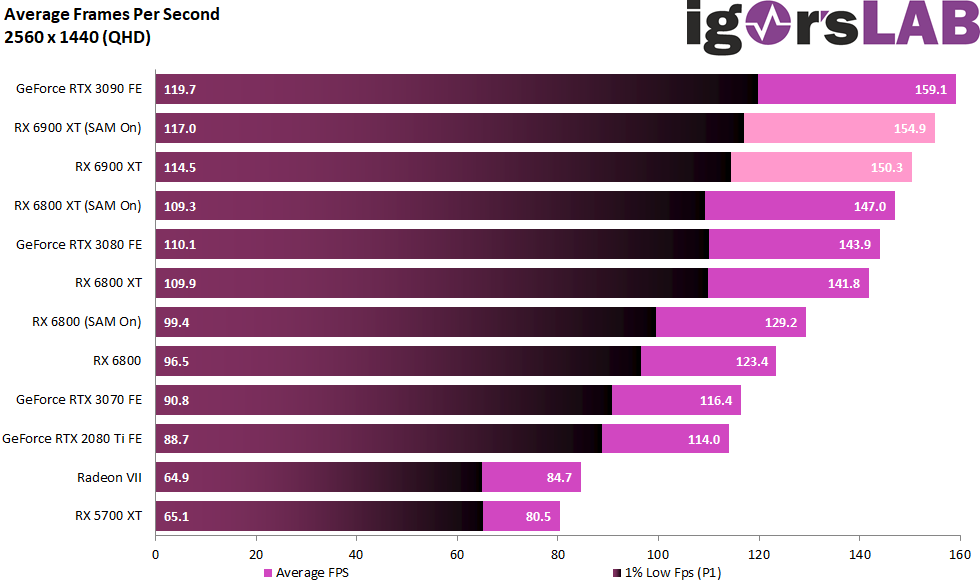
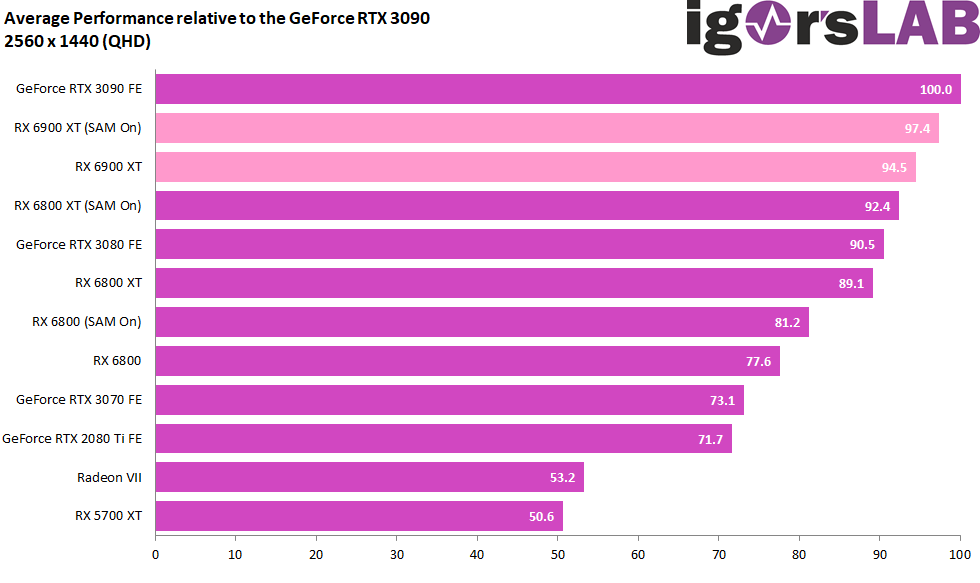
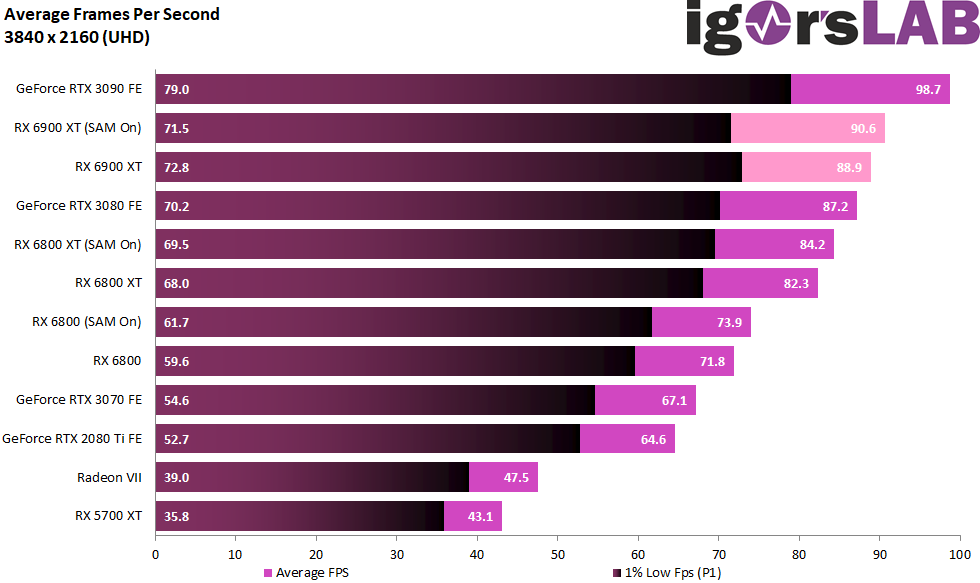
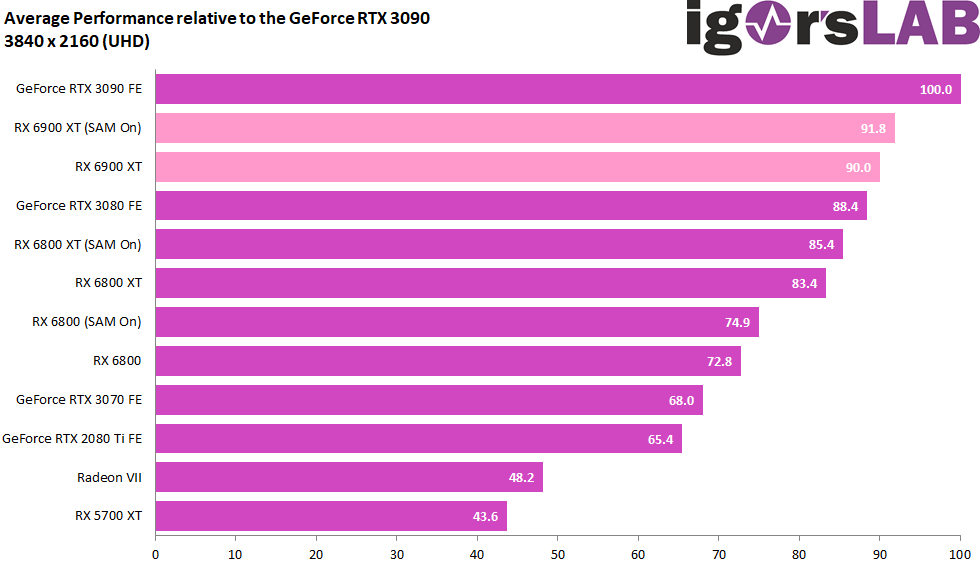


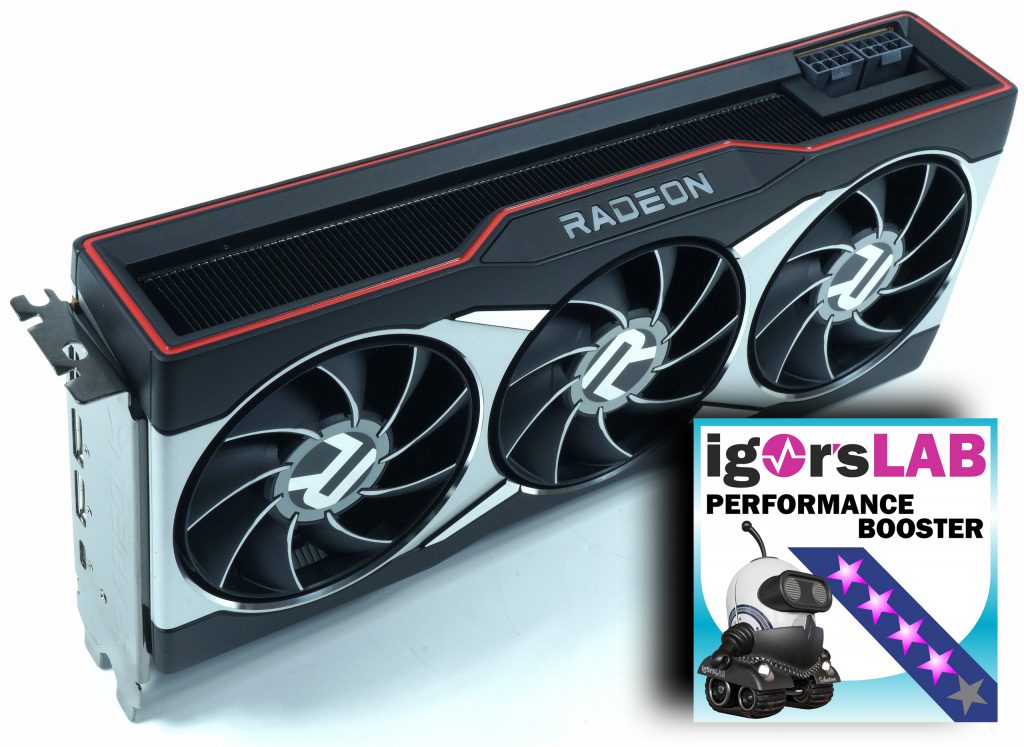




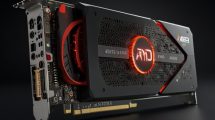












Kommentieren